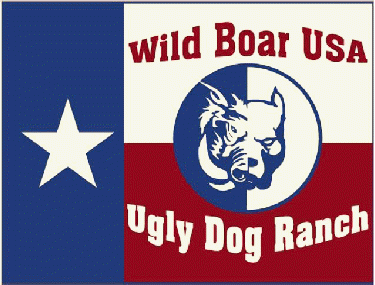I think oconee is right about breeding science being able to produce good dogs consistently, but historically this works best with large numbers of dogs, when the Germans refined their dog breeds they had kennels with over a thousand dogs at times, when you're breeding the best to the best out of a thousand dogs you can refine the gene pool much faster than if you are breeding best to best of 30 dogs, when its 30 dogs it's much more of a crap shoot like judge says, even if you are working with line bred dogs. A lot of our hunting breeds in the U.S. Have way more diversity in the gene pool than German bred dogs, some of the books I've seen that promote inbreeding and line breeding without outcrossing don't take into account the breeding history of the dog breed. It's a shame the American hunting dog breeders from a generation or two ago didn't write more books, im always curious about stories of dog sub breeds kept in one family for generations that have not experienced inbreeding depression. Some of the stories of Florida or cracker curs come to mind
Id like to see Cajun chime in and tell us what percentage of his litters make sure nuff hog dogs, not to put him on the spot but because he's a reputable breeder working with a consistent line of dogs with a German history, Mtn curs and cats I believe have exponentially more genetic diversity just judging by their color variations, maybe bmcs less so because they have been bred for color
Breeding a high percentage of quality dogs from a small family of dogs is probably harder than you think or more people would be doing it
Creating your own breed seems like an exhausting amount of work, I'm sure during the creation of some of the newer breeds like the Dogo they had hundreds of dogs at times or culled through hundreds in a year. Once your gene pool has been refined to produce mostly what your looking for you could reduce your numbers down to 15-30 but the less dogs you have the more likely you are to wind up in a corner and have to outcross
Sent from my iPhone using Tapatalk
This whole post kinda stirred my interest up.
I'm like Cajun...there are so many books and studies and articles to read on genetics and line breeding, and outcross vigor and such that it isn't worth going over.
But in this post it was brought up about German breeds and that could be replaced with any centuries old or country of origin 'breed' and then this was compared to the way american 'breeds' are, and were created. American was used in context of new breeds but could be substituted for say new world dogs from Argentina like dogos or the Australian lurcher crosses as well as some 'breeds' of the United States.
All of those purpose bred breeds of the old world started as crosses.
The German breeds like the Danes, boxers, rotts, German shepherds, dobs, etc. as well as British breeds like bulldogs, and eastern breeds be it Far East to Mid East to eastern block breeds.
These dogs may have been all bred for so long and these breeds as a whole reached a type that was created thru selection for performance and eventually a certain phenotype or even color or size that made them cookie cutters...made them distinct breeds.
All this lack of variation they were bred toward eventually caused the end of progress or depression. Let alone all the many companion breeds bred for type or conformation soley.
Sure toy can breed two pure breeds together and pretty much predict a type or temperament. Maybe even a degree if usefulness performance wise.
Maybe they did have hundreds of dogs and a group of folks breeding toward a goal be it a certain performance or type and they achieved it...wow
Many of those breeds are no longer useful or the best in the feild of their original intent...because they were originally bred from crosses which made them the best sort initially until they were actually purposefully bred for type.
Are Danes the BEST dogs bred for boar as history or the akc def claims them to be as a breed as a whole?
What about boxers?
What about bulldogs(British)
What about mastiffs?
What about German shepherds?
Etc...etc...
These breeds can all be beat by a dog that has had a cross bred in down the line then the cross bred upon at the given venue.
These breeds are all set in type and useful no doubt but at some point they tend to loose their usefulness when a certain cross is breds in and surpasses the original in working ability and changes the 'type'...albeit a little..but enough.
It's fluid.
If the dog is a true working breed...it's fluid.
This is where the best to best comes in.
Enter these 'new' breeds of tge 'new world' The dogo for instance.
Isn't there like 13 breeds in the dogo. I don't believe for a second the dogo breeders had hundreds of dogs at a time Argentina. They made a cross they liked it. Bred on it a couple gens and added another breed that brought something they thought they lacked...bred few more gens then added something else etc etc. many breeders doing this simotaneoulsy and trading dogs back n forth until the came up with a type and this is bred on and and here is where the cycle of depression starts. Same with the ab.
Curs are bit dif. They were always a hodgepodge. Over a hundred years dif folks or groups of folks added what they saw fit.
Be it bulldog, hound, mutt, whatever... Best to best.
This all explains the diversity or cur types like in catahoula, or any other cur
Once folks close the books on a type, a breed is doomed to be surpassed.
That's the whole downfall with registries and pedigrees.
Same with hounds, or bulldogs, or whatever. You close the books and day this is the best the formula is set and that's the point where the depression starts and it's doomed to be beat down the road by a cross that someone try's and the cycle starts over again
Breeding dogs and dog breeds is a fluid thing.
That's just my take...



